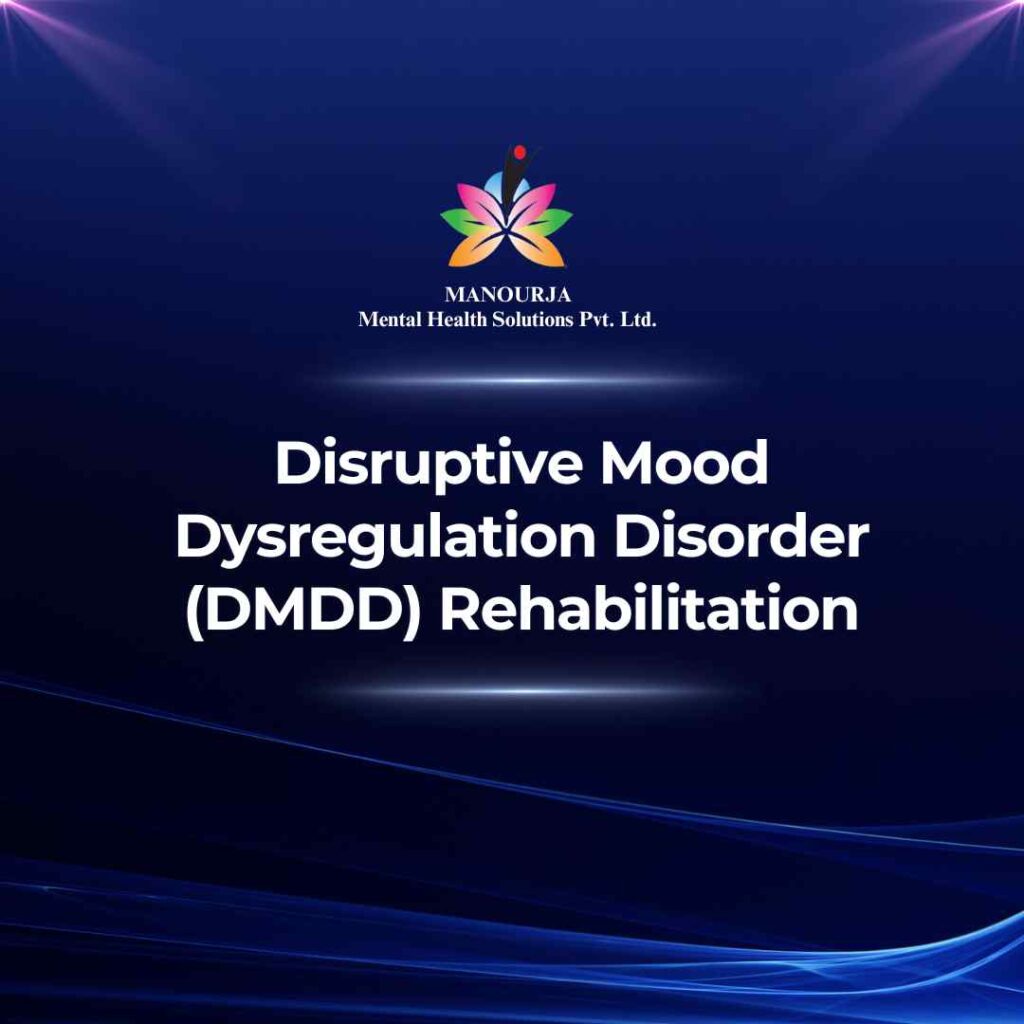Disruptive Mood Dysregulation Disorder Rehabilitation

Disruptive Mood Dysregulation Disorder (DMDD) is a relatively new diagnosis characterized primarily by chronic, severe persistent irritability in children. This condition includes frequent temper outbursts that are out of proportion to the situation and inconsistent with the child’s developmental level. Understanding its signs, symptoms, and appropriate treatment options is crucial for effective management and improvement of the child’s quality of life and functioning.
Signs and Symptoms of Disruptive Mood Dysregulation Disorder
- Severe Temper Outbursts: These occur three or more times a week and may be verbal rages or physical aggressiveness toward people or property.
- Persistent Irritability: Almost constant anger and irritability between the severe temper outbursts.
- Inappropriate Intensity: The intensity of the outbursts and irritability are grossly out of proportion to the situation.
- Duration: Symptoms must be present for 12 or more months to qualify for a DMDD diagnosis.
- Age of Onset: Symptoms must begin before the age of 10.
Indicators for Outpatient Psychosocial Rehabilitation (OPD)
- Manageable Symptoms: Where outbursts and irritability do not severely disrupt family or academic life, or can be managed with regular therapeutic intervention.
- Supportive Home Environment: The presence of a stable and supportive home environment that can support daily routines and reinforcement of therapeutic strategies.
- Regular School Attendance: The child can attend school regularly without frequent disruptions or safety issues for self or others.
Indicators for Inpatient Psychosocial Rehabilitation (IPD)
- Severe Dysfunction: Frequent, intense outbursts that result in significant disruption of daily activities, including regular education settings.
- Safety Concerns: When there’s a risk of harm to the child or others, requiring a controlled environment for stabilization and intensive treatment.
- Lack of Progress in Outpatient Settings: Previous outpatient treatments have been ineffective, and symptoms persist or worsen.
Factors Influencing the Decision
- Severity and frequency of outbursts.
- Impact on educational and social functioning.
- Safety risks to the child or others.
- Effectiveness of previous outpatient interventions.
- Availability of family and community resources.
How Psychosocial Rehabilitation Aids in Treating DMDD
Psychosocial rehabilitation aims to improve emotional regulation, reduce the frequency and severity of outbursts, enhance social skills, and support the child’s ability to function more effectively in daily activities.
Specific Techniques and Approaches at MANOURJA
- Cognitive Behavioral Therapy (CBT): Helps children understand the connections between their thoughts, feelings, and behaviors, and develop more effective ways to respond to stress and frustration.
- Parent-Child Interaction Therapy (PCIT): Coaches parents on how to manage their child’s behavioral issues effectively, enhancing parent-child interactions.
- Dialectical Behavior Therapy (DBT): Used for older children, focusing on mindfulness, emotion regulation, distress tolerance, and interpersonal effectiveness.
- Social Skills Training: Group settings where children can learn and practice appropriate social interactions under supervision.
Steps in Psychosocial Rehabilitation at MANOURJA
- Comprehensive Evaluation: Detailed assessment of the child’s emotional, social, and behavioral issues to tailor an individualized plan.
- Development of a Treatment Plan: Customized to address specific symptoms and goals, involving the child, family, and school.
- Implementation of Treatment Strategies: Structured interventions in individual, group, and family settings.
- Ongoing Monitoring and Adjustments: Continuous evaluation of the child’s progress with regular updates to the treatment approach.
- Coordination with Educational Services: Ensuring that the child’s educational needs are met in conjunction with therapeutic goals.
“Every day is a new opportunity to grow stronger and more resilient”
